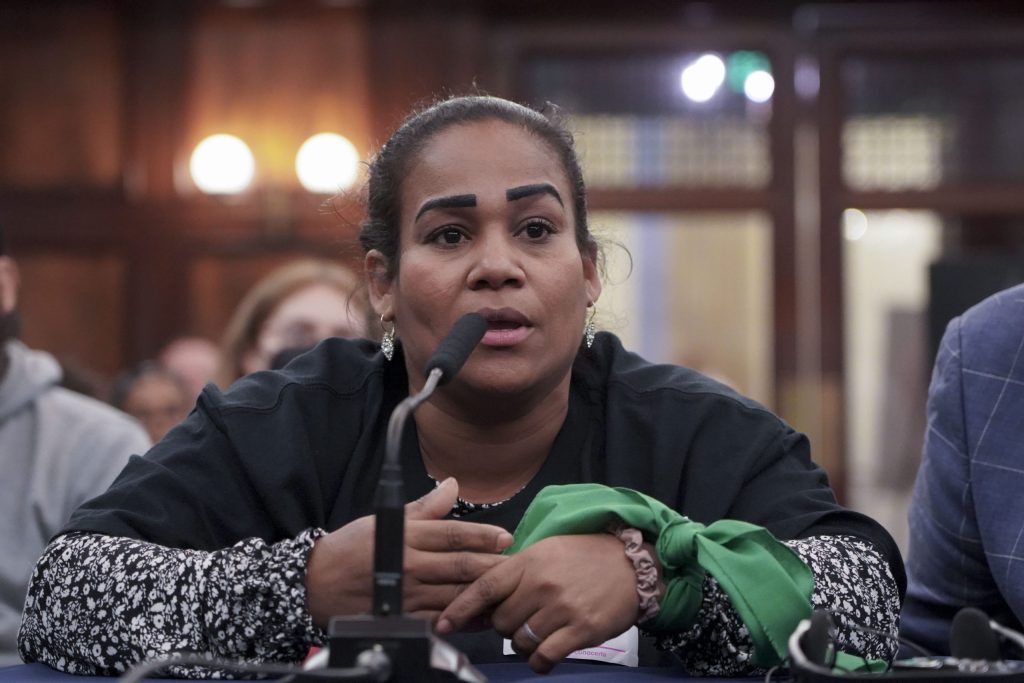About 1,000 children, or nearly 15% of the 7,600 kids living in migrant shelters whose families got notices to leave city shelters since the end of June have left the public school system, representatives of the city’s Office of Asylum Seekers disclosed at a City Council hearing Tuesday.
Molly Schaeffer, the head of the city’s Office of Asylum Seeker Operations, shared that and other statistics in her testimony regarding families that had received notices to vacate shelter within 60 days — suggesting widespread disruption to children.
“It’s devastating the schools,” responded City Councilmember Gale Brewer (D-Manhattan). “We’re one administration. Are we thinking about what we can do to keep those kids…so they will stay in those schools.”
According to Schaeffer, another 830 transferred schools while another 2,300 switched shelters but remained in their original school and 3,100 remained in the same shelter and school
The figures came out in a Council hearing scrutinizing the shelter stay time limits, which the administration of Mayor Eric Adams began phasing in just over a year ago.
More than 23,000 60-day eviction notices have gone to families with children since then, who have had to re-apply for shelter if they had nowhere else to go. According to the most recent data, from August, only 5,300 households currently live in shelters subject to the 60-day time limits — indicating some families have had to move again and again.
In more than four hours of testimony, people living in migrant shelters described the exhaustion of the regular moves, losing valuable immigration paperwork as their address changed again and again, and parents pulling their kids out of school for days at a time in the course of getting reassigned to a new shelter.
Kelly Gonzalez, a mother of seven children, said she and her family had had to move five times in the last year, with her kids losing days of school each time while they waited at the city’s intake center at the Roosevelt Hotel in midtown Manhattan for a new assignment.
“I came from Venezuela to the United States thinking of my children,” she testified in Spanish. “With a steady place to live, even if it’s a shelter, our life would change. I would be able to find a job, my kids could get school bussing,” she said.
“I’m a mother, thinking of the education of her children,” she said.
Talking Trauma
Protesters calling for an end to the time limits on shelter stays briefly interrupted the proceedings, chanting “end shelter evictions now,” before they were forced out of the chambers by Council guards. The policy has been criticized for months by advocates, and left-leaning members of the Council, though a bill that would end the time limits hasn’t made it out of committee.
“Eviction after 60 days is not a trauma-informed policy,” Councilmember Alexa Avilés (D-Brooklyn), who chairs the council’s Immigration Committee, told Dr. Ted Long, who oversees the city’s Health and Hospitals emergency shelters, after he’d dodged her question multiple times if he considered it to be a trauma-informed policy as a physician. “Its important for human dignity to acknowledge.”
City officials have defended the 60-day limits on shelter stays for some families with children and 30-day limits on single adults, saying it’s helped the city rein in costs while keeping the shelter system from growing in perpetuity.
There are around 57,000 migrants currently living in city shelters, down from around 67,000 in January, with Adams crediting that drop to the city’s approach. That decline coincided with a steep drop in the number of new arrivals arriving in New York City since the administration of President Joe Biden implemented new border restrictions in June.
Thus far the policy has only applied to around 5,300 migrant families living in emergency shelters overseen by the city’s Health and Hospitals Corporation and its Department of Housing Preservation and Development. Another 7,000 families live in shelters overseen by the city’s Department of Homeless Services, which said it intends to implement 60-day time limits, but those have yet to go into effect as of Tuesday.
The Council hearing came a day after the administration announced a tweak to the city’s 60-day shelter limit for migrant families. While families will still be required to reapply at the Roosevelt Hotel for a second stint, often in a new shelter, they can then apply for additional stays without needing to relocate.
“We continue to make these changes as we get input from community members,” Schaeffer told the Council.
Another policy tweak is a plan for a new centralized mail system, with one address where people can receive important documents. The move comes after more than a year of complaints from asylum seekers and their advocates that vital immigration and other important documents were getting lost in the shuffle as they were transferred from one facility to the next.
The data released by Schaeffer Tuesday appears to dovetail with recently released public school enrollment data showing around 1,000 fewer students than last year, when enrollment was flat after years of decline mostly because of newly arriving migrant kids.
There are about 815,000 students enrolled in grades K-12 this year—down by about 100,000 from the 2019-2020 school year.
Earlier this year, then schools chancellor David Banks called the arrival of migrant students a “godsend” as the new students buoyed long-declining public school enrollment.
But his rhetoric at times conflicted with that of his boss, Adams, who warned the arrival of migrants without meaningful help from the federal government would “destroy New York City.”

